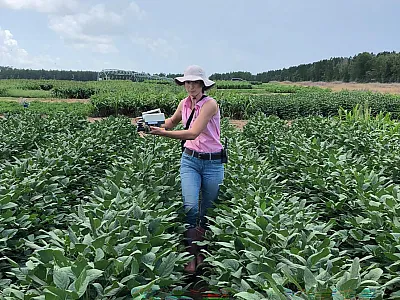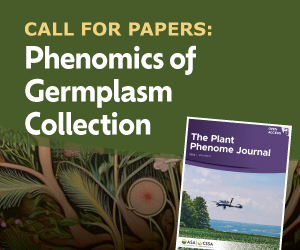From Gain to Bane—and Back Again: What’s Next for Eastern Red Cedar?
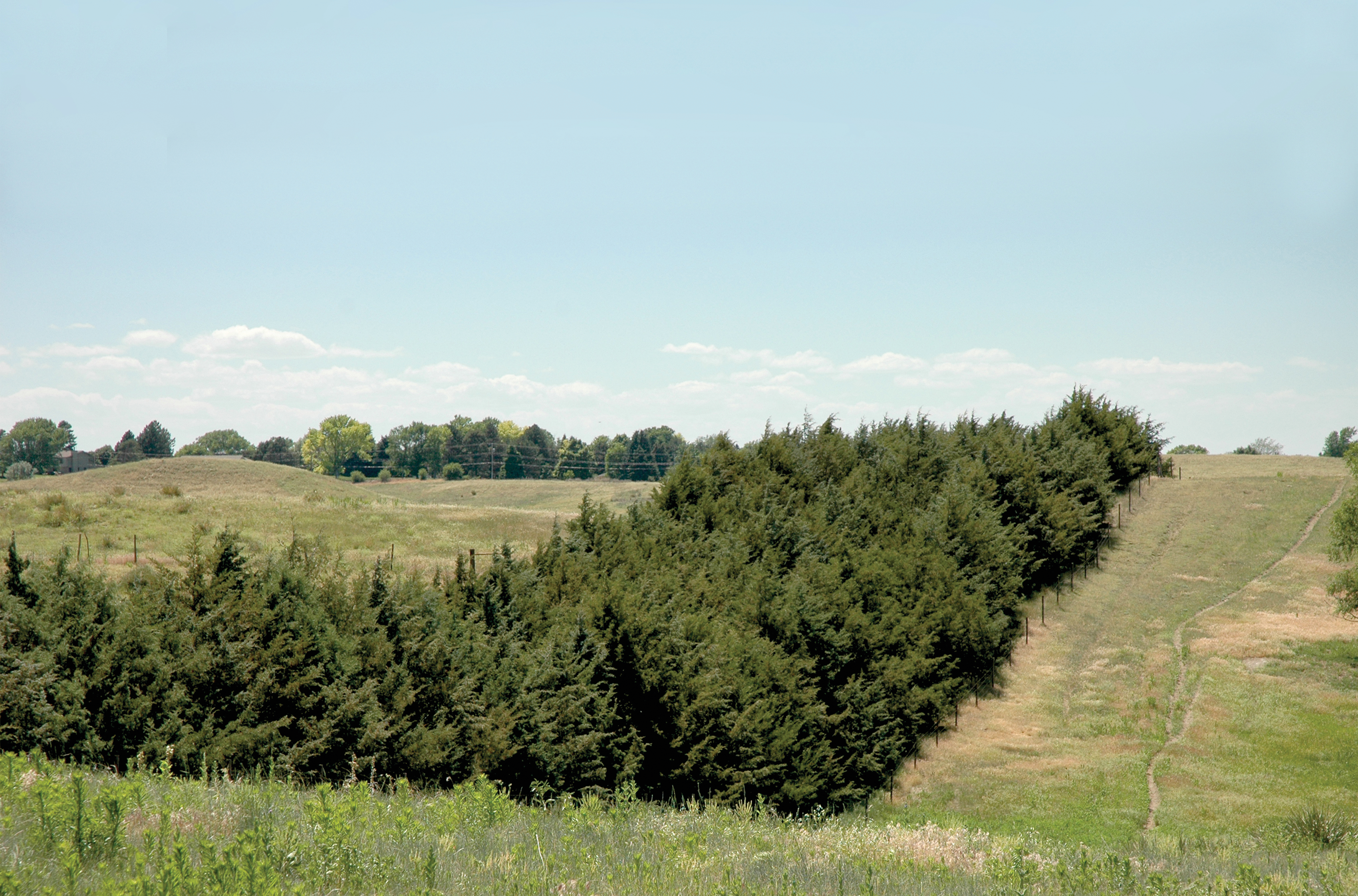
Eastern red cedar, a hardy conifer useful as a windbreak and wildlife habitat, has nonetheless encroached on millions of acres of grasslands in parts of the United States, raising alarm among farmers, ranchers, and conservationists as well as questions on how to cope with its spread.
As scientists explore ways to make some use of this fast‐spreading species, a recent article in the Soil Science Society of America Journal presents evidence that the trees benefit soils in many ways.
That’s good news for potential future markets for the tree, whether those are pharmaceuticals, biofuels, or even booze.
When you look at his resume, it’s no surprise to learn how much soil scientist Tom Sauer loves and respects the environment. Recently retired after three decades with the USDA‐ARS, he continues his work in conservation, currently as a forester under the USDA’s ACES (Agriculture Conservation Experienced Services) program in support of the Natural Resources Conservation Service’s Soil Health Division. But ever since his boyhood on a Minnesota farm, his high regard for nature has been tested by one particular species.
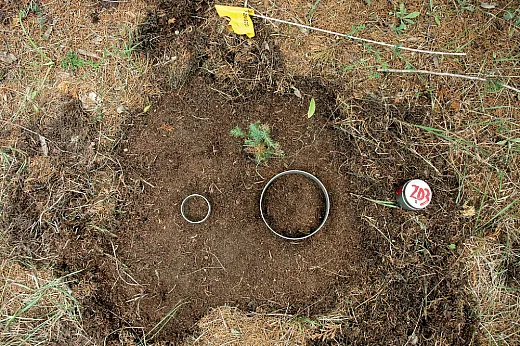
“We had red cedar by our home,” recalls the SSSA Fellow, “and working underneath them, they’re just nasty, pokey, scratchy. They’re just horrible.”
Sauer is hardly the only one harboring animosity for the eastern red cedar (ERC). Planted widely across the western United States as a windbreak by settlers, the tree spread easily via birds into cropland, prairies, and other areas where it was unwelcome. Today, this flora non grata is broadly considered a nuisance tree across the West, particularly in Oklahoma where it has overtaken millions of acres. While describing the tree during an interview, Sauer repeatedly used the term invade, before apologizing—“Sorry, I keep saying that!”—and switching to the technically correct verb, encroach. After all, ERC is a native in the area—just an exceptionally tough one.
Despite the conifer’s notoriety among farmers and naturalists and his own bad memories, Sauer’s career eventually led him back to ERC: As a scientist, he is interested in how trees in general can mitigate the effects of climate change. He recently led a study looking into two potentially significant environmental benefits of ERC: as a boost to soil health and as a biofuel. Sauer and his colleagues recently summarized some of their findings in an article in the Soil Science Society of America Journal (SSSAJ; https://doi.org/10.1002/saj2.20534). The article is part of a special virtual issue on climate change (https://bit.ly/climate‐change‐issue) that features a wide range of research from across the Societies’ journals.
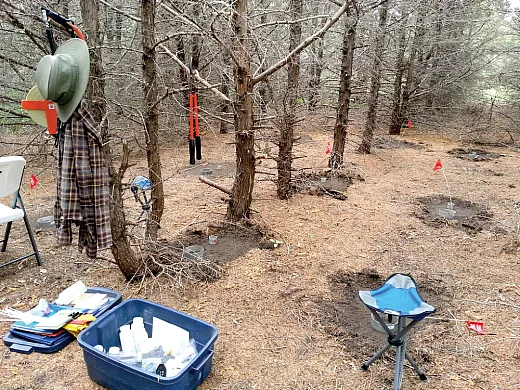
Of Cedar and Silver Linings
Eastern red cedar does offer benefits and not just by blocking wind and lining chests. Researchers at the University of Missouri have been extracting and studying compounds from ERC that they say could be used as antibiotics and skin cancer treatments, among other medical applications.
Sauer’s project, funded by the USDA’s Sun Grant Program, focused on other kinds of benefits: improving the soil, sequestering carbon, and use as feedstock for biofuel. His SSSAJ article outlined what the research team learned about the first two of those benefits.
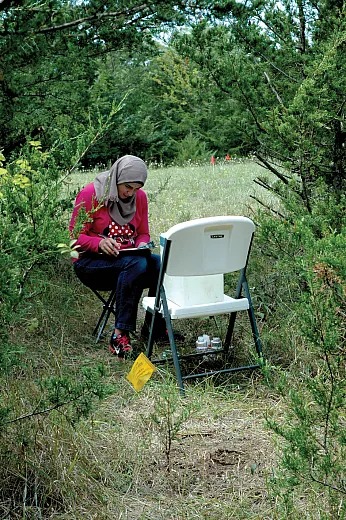
The scientists studied nine sites across five states in the northern Great Plains where stands of ERC of varying ages were growing near fields under a range of conditions. They measured infiltration, penetration resistance, bulk density, pH, aggregate stability, soil organic carbon (SOC), and total nitrogen (TN). They found that, at five of the sites, the soil below these stands had significantly higher SOC stocks than soil in the adjacent fields. Averaged across all sites, SOC under the conifers was 16.8% greater.
The team saw evidence of other soil health benefits, too. Most locations had higher TN and carbon‐to‐nitrogen ratios as well as lower bulk density beneath ERC stands.
Sauer had studied ERC previously, so was not surprised to see its carbon‐sequestering value highlighted in this data. But he still found it impressive. In previous work (https://doi.org/10.2136/sssaj2010.0114), examining a 35‐year‐old ERC windbreak in Nebraska, Sauer and his colleagues found that upwards of 70% of the SOC in the top 7.5 cm of soil had come from the conifers—“an amazing amount of turnover,” he notes.
“Very quickly, it appears the soil changes to this new input of biomass and starts storing carbon amazingly fast,” Sauer says. “As soil scientists, we like to think of decades and centuries. And here we’re talking just 35 years, and almost two‐thirds or three‐quarters of the carbon now has a different source.”
Given the diversity of sites in the SSSAJ study, it was not possible for the researchers to spell out precisely how and why SOC and soil health improved under and near the ERCs. But one relationship came across surprisingly clearly, Sauer says: mean average precipitation was strongly correlated with both SOC and the trees’ aboveground biomass carbon.
“We would expect that the growth would be related to available water,” Sauer explains. “I don’t think we expected it to be as strongly related—and the fact that it was essentially the same relationship for soil organic carbon in the crop and under the trees”. So even though there are people that say, ‘Well, climate is not the most important factor in soil organic matter carbon sequestration,’ it certainly is a pretty darn important factor in this study.
“It just shows the fact,” Sauer continues, “that if you create more biomass, you have more potential to sequester carbon in the soil.”
Seen in this light, Sauer says ERC’s incredible resilience looks more like a silver lining than a failing.
“If the red cedar continues to live, it retains some of that ability to improve soil health longer,” he says of the drought‐tolerant tree. “They’re survivors. The deer don’t mess with them. The rabbits don’t mess with them. … They’re good for the soil and they’ll grow, and there’s a lot to be said for that.”
So, they can stand up to a storm, power through a drought, and outwit hungry ungulates. But could they also power a car … or an airplane?
Is Cedar Good Fodder for Fuel?
In 2016, a commercial flight carried passengers from Seattle to Washington, DC. Hardly news, except for this: 20% of the fuel in that Alaska Airlines aircraft, though chemically indistinguishable from conventional jet fuel, was derived from trees.
Most of us are familiar with the use of edible oilseeds, like soybean and canola, for biofuels: In the U.S., they are the source of more than 80% of feedstock for biodiesel production. But in addition to starch‐ and sugar‐based sources, woody biomass can also be converted to biofuel.
The process involves more steps: the polysaccharide building blocks of cellulose must be broken down and processed before the material can be fermented into fuel. One clever way to do that was invented in 2009 by JunYong Zhu, a research general engineer with the USDA’s Forest Products Lab in Madison, WI. Dubbed SPORL (Sulfite Pretreatment to Overcome Recalcitrance of Lignocellulose), the process involves first soaking the woody biomass in a sulfite solution and heating it to break it down physically and chemically. That readies those fibers to be efficiently broken down from polysaccharides to simple sugars through enzymatic saccharification and then fermented into alcohol such as ethanol or isobutanol. Thanks to SPORL, 1,080 gallons of jet fuel was produced for the Alaska Airlines flight from trees.
They were Douglas fir, a good source of woody biofuel, according to Zhu. Lodgepole pine, red pine, loblolly pine, and spruce are likewise good sources of woody biofuel, but ERC—not so much.
Just as ERC is tough to get rid of and tough against microbes, so is it tough to break down. In the final report on Sauer’s Sun Grant project, he, Zhu, and their collaborators noted an enzymatic conversion rate of most ERC samples of 60%. That’s much lower than softwoods better suited to biofuels, Zhu says, where rates run closer to 90%. Across the sites studied for the project, the amount of glucose gleaned per kilogram of ERC residue ranged from 20 to 180 grams. Again, this is low compared with better woody biomass alternatives, according to Zhu.
“Overall, cedar is not an ideal species to work with,” Zhu says. One reason: It contains significantly less cellulose, pound for pound, than do pines or firs—roughly 30% compared with 45%, Zhu says. This is because so much of ERC’s biomass is in its needles. “Any material containing more needles, not just cedar, is going to be a problem,” he says. Cedar’s relatively higher lignin (and thus carbon) content may ultimately make it more suited to chemical conversion to biofuel than biochemical, Zhu suggests.
Not that he is giving up on ERC; he and other scientists continue to hunt for ways farmers could make money off the tenacious tree. He recently had the idea of producing a potable cedar‐based alcohol by treating ERC at low temperatures with an indirect food additive that is approved by the U.S. Food and Drug Administration. The fermentation tank for that project is on the back burner; Zhu hasn’t found any partners in the alcohol industry. But he still thinks the idea has merit. “The cedar smell is kind of good,” he says. “Maybe the alcohol will have a unique taste.”
As for Sauer, he is no longer working on ERC. But he continues studying other trees, in particular their effects on soil. Small farms looking to diversify are increasingly interested in planting fruit and other trees, he says. Should they consider cedar? For Oklahomans and most ranchers, that’s a hard pass, Sauer advises. But there may, with the right markets, be more potential for the tree on marginal lands one day. And he himself would plant one if he needed a windbreak up in Minnesota: It would flourish while improving the soil. “It’s a survivor,” he reiterates. “That’s good and bad.”
DIG DEEPER
To find out more about the research, read “Eastern Red Cedar Effects on Carbon Sequestration and Soil Quality in the Great Plains,” published in the Soil Science Society of America Journal: https://doi.org/10.1002/saj2.20534
The article is one of two dozen featured in a special virtual issue, “Advancing Resilient Agricultural Systems: Adapting to and Mitigating Climate Change,” showcasing recent research from many of the journals published by ASA, CSSA, and SSSA. See https://bit.ly/climate‐change‐issue.
Text © . The authors. CC BY-NC-ND 4.0. Except where otherwise noted, images are subject to copyright. Any reuse without express permission from the copyright owner is prohibited.







